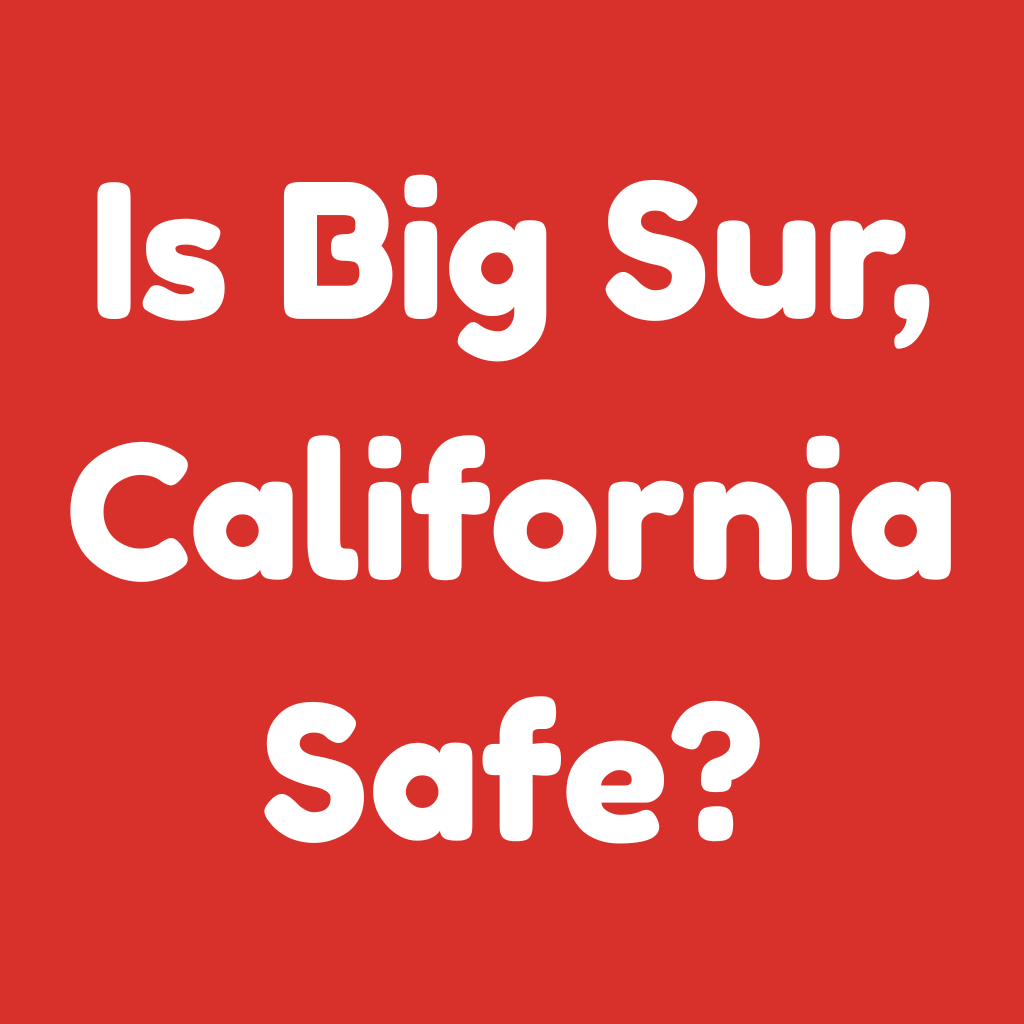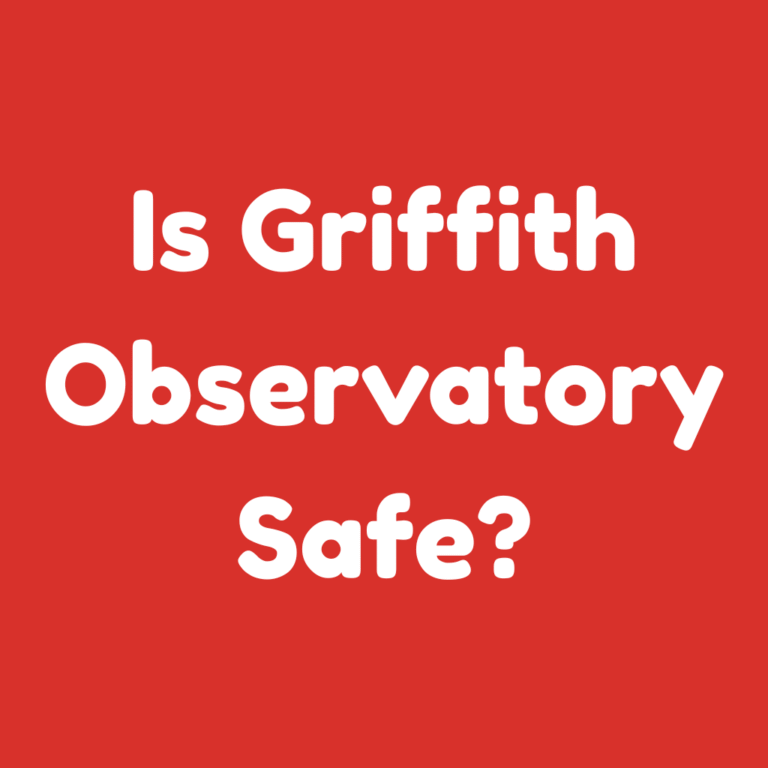Is Big Sur, California Safe?
Big Sur, California, is a stunning stretch of coastline that lures travelers from across the world. With its rugged cliffs, towering redwoods, and sweeping ocean views, it’s easy to see why so many are drawn to this part of the Golden State.
But with all its natural beauty comes an important question: Is Big Sur safe to visit? This blog post will explore the safety of Big Sur in detail, from personal safety concerns to navigating the terrain, and the environmental factors you need to consider before heading out.
Let’s dive into everything you need to know about ensuring a safe and unforgettable adventure along one of the most iconic landscapes in the United States.
Personal Safety in Big Sur: What You Need to Know
Before diving into the breathtaking landscapes, let’s first address a common concern personal safety. Is Big Sur safe for all types of travelers?
Solo Travelers
If you’re traveling solo to Big Sur, rest assured that the area is generally safe. It’s a remote location, and the peacefulness and solitude can be refreshing. However, with remoteness comes the need to be prepared.
Cell phone service can be patchy, especially in the more isolated areas. It’s best to tell someone your plans and keep your phone charged in case of an emergency.
Families
For families, Big Sur is a fantastic destination. There are family-friendly hiking trails, campsites, and beaches.
However, parents should supervise their children closely, especially near cliffs and the ocean. The terrain can be steep, and certain areas of Big Sur, like the McWay Falls Trail, are right on the edge of the cliffs, which can pose a risk for children running ahead.
Group Travelers
Groups often enjoy the area without issues. Since Big Sur isn’t a major tourist hotspot compared to other parts of California, it tends to be less crowded, which can make group travel more comfortable. Still, it’s important to stay together and avoid venturing off the beaten path alone.
Solo Female Travelers
Big Sur is generally safe for solo female travelers. However, as with any remote area, common-sense safety is key. Avoid walking alone after dark, and if you’re staying in a campsite, make sure to lock your vehicle and secure your belongings.
Navigating the Road to Big Sur: What You Should Know
One of the most common questions travelers have about Big Sur is whether the drive is safe. The route along Highway 1 offers jaw-dropping views but can be tricky at times, especially for those not used to mountain roads.
The Road Conditions
Highway 1, also known as the Pacific Coast Highway, is a winding road with sharp turns, steep inclines, and dramatic drop-offs into the ocean below.
Some sections of the road can be narrow with limited shoulder space, making it important to drive cautiously.
- Weather Impact: Big Sur’s weather can change rapidly. Coastal fog can reduce visibility, especially in the early morning or late afternoon. Heavy rain and mudslides are also occasional hazards, particularly in the winter months. Always check road conditions before heading out and plan for potential delays.
- Drive During Daylight: To get the most out of your trip and ensure safety, drive during the daylight. Not only will you have the best view, but you’ll also have more time to react to potential hazards.
Parking and Access Points
There are several scenic viewpoints and trailheads along the highway. Be mindful of parking regulationssome areas may require permits, and others may not have clear designated parking spots. Always park in designated areas to avoid fines and minimize the risk of accidents.
Emergency Services
Big Sur is quite isolated, so access to emergency services can be limited. The nearest hospital is roughly 45 minutes away in Monterey.
In case of an emergency, it’s crucial to stay calm, have a first-aid kit on hand, and ensure you have a way to contact help.
Wildlife and Natural Hazards: What to Look Out For
With its rugged landscape and varied ecosystems, Big Sur is home to a range of wildlife. While the area is stunning, it’s important to know what risks might come from nature.
Local Wildlife
- Mountain Lions: While rare, mountain lions do inhabit the area. Always stay aware of your surroundings when hiking, especially during the early morning or dusk hours when they are most active. If you encounter a mountain lion, stay calm, make yourself appear larger, and back away slowly.
- Bears: Black bears live in Big Sur’s forests, but they’re generally shy and avoid humans. Still, never leave food unattended, especially at campsites. Use bear-resistant containers if camping.
- Snakes: Western rattlesnakes can be found in the area. Watch where you step, particularly in the spring and summer months when they are more active.
Ocean Hazards
The ocean may look inviting, but swimming in Big Sur can be risky due to strong currents and cold water temperatures. Rip tides are common, and some beach areas are not patrolled by lifeguards. If you plan to visit the beach, always check for warnings and signs regarding water safety.
Common Safety Mistakes to Avoid in Big Sur
Having a safe trip to Big Sur is largely about preparation and awareness. Here are some of the most common mistakes people make when visiting:
Overestimating Hiking Abilities
While many of Big Sur’s trails are beautiful and accessible, they can also be challenging. Trails like the Pfeiffer Falls Trail or the Garrapata State Park Trail can be steep and require sturdy footwear. Don’t overestimate your abilities—always start with easier trails if you’re new to hiking.
Ignoring Weather Warnings
Big Sur’s weather can change rapidly. Some visitors ignore weather warnings, only to get caught in sudden rainstorms, fog, or even mudslides. Always check forecasts and road conditions before embarking on a trip.
Underpacking
Despite its remote location, Big Sur’s natural beauty can be demanding. Be sure to pack essentials such as:
- A first-aid kit.
- Waterproof gear for rainy weather.
- Snacks and extra water for hiking.
- A map or offline maps, as cell service is spotty.
Not Preparing for Limited Cell Service
Big Sur’s cell phone service is unreliable in many areas, so don’t rely on your phone for directions or emergency communication. Consider bringing a portable charger, and make sure someone knows your plans in case you encounter any issues.
Conclusion and Travel Tips for a Safe Big Sur Experience
Big Sur is undeniably one of the most beautiful places on Earth, but ensuring your safety requires a little preparation.
If you’re ready to take on the challenge, follow the tips above, and you’ll have a memorable and safe experience. Feel free to share your Big Sur stories and tips in the comments below!
- Plan ahead: Always check road and weather conditions before heading out, and plan your drive and hikes during daylight.
- Respect nature: Be aware of local wildlife and the ocean’s dangers.
- Travel with awareness: Whether traveling solo, with a family, or in a group, staying alert and prepared is key.
- Pack appropriately: Ensure you have the essentials, such as a first-aid kit, extra water, and a charger.
FAQs About Big Sur Safety
- Is Big Sur safe for hiking?
- Yes, but always be prepared for the terrain. Stick to well-marked trails and bring the right equipment.
- Are there any dangerous animals in Big Sur?
- Big Sur is home to mountain lions, black bears, and rattlesnakes, but they are generally not aggressive if you respect their space.
- How dangerous is the ocean in Big Sur?
- The ocean can be hazardous due to strong currents, so be cautious when swimming or exploring the beaches.
- Is it safe to drive to Big Sur?
- The road to Big Sur can be treacherous, with narrow, winding roads. Always drive cautiously, especially during bad weather.







